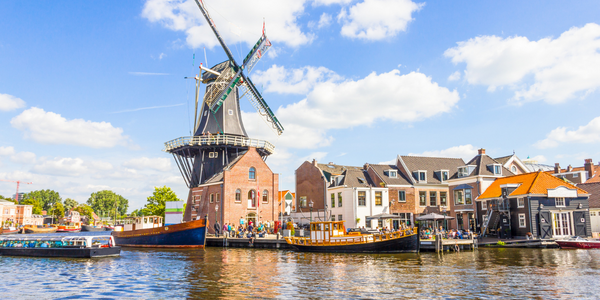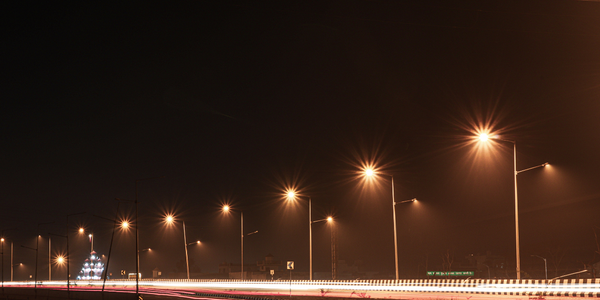Somerville's Parking Flourishes with Fully-Integrated Parking Management
公司规模
Mid-size Company
地区
- America
国家
- United States
产品
- IPS Fully-Integrated Parking Management Suite
- IPS M5™ Single-Space Smart Meters
- IPS MS1™ Multi-Space Pay Stations
- IPS PARK SMARTER™ Mobile Payment Application
- IPS Next-Generation Data Management System (DMS)
技术栈
- Wireless Telecommunications
- Payment Processing Systems
- Intelligent Data Management
- SaaS Technologies
实施规模
- Enterprise-wide Deployment
影响指标
- Customer Satisfaction
- Environmental Impact Reduction
- Productivity Improvements
技术
- 功能应用 - 远程监控系统
- 分析与建模 - 实时分析
- 网络与连接 - 无线局域网
适用行业
- 城市与自治市
- 运输
适用功能
- 设施管理
- 商业运营
用例
- 智慧城市运营
- 预测性维护
- 远程资产管理
服务
- 系统集成
- 数据科学服务
- 软件设计与工程服务
关于客户
The Borough of Somerville, New Jersey, is a vibrant community known for its small-town charm and proximity to major cities like New York City and Philadelphia. With a population of 12,000, Somerville's Main Street is a bustling hub featuring over 45 diverse and independently-owned restaurants and retail shops. The Borough hosts a variety of special events, such as the seasonal classic car show, Somerville Cruise Nights, which can increase the population to nearly 50,000 at its peak. As a result, strategic parking management is crucial to ensure accessibility and a positive experience for residents and visitors alike. Somerville's commitment to providing a seamless parking experience is essential for supporting its local businesses and maintaining its economic growth.
挑战
The Borough of Somerville faced challenges with its outdated and disconnected parking system. The existing system relied on coin-only single-space meters and coin and bill-only pay stations from different suppliers, lacking a unified back-end system for data consolidation, analytics, or real-time alerts. This setup was labor-intensive, costly, and limited the Borough's ability to respond to demand or introduce dynamic rates. The legacy system strained the Borough's limited operational and personnel resources and failed to provide a positive parking experience. As a driver of economic growth, Somerville needed a more convenient and frictionless parking experience to support its local businesses. The Borough required a modern, fully-integrated solution that could scale up to additional features and manage all aspects of parking in one place.
解决方案
Somerville implemented the IPS Fully-Integrated Parking Management Suite to address its parking challenges. The solution included IPS credit-card enabled M5™ single-space smart meters and MS1™ multi-space pay stations, offering enhanced payment options, an intuitive user interface, energy-efficient solar power, and modular components for streamlined maintenance. Additionally, the IPS PARK SMARTER™ mobile payment application was deployed, providing an integrated on-street meter system that guides customers to available spaces, reducing time spent searching for parking and mitigating carbon emissions. The app sends real-time alerts when parking sessions are due to expire and allows customers to extend their sessions via their phones. The IPS Next-Generation Data Management System (DMS) wirelessly connects the entire parking meter network, providing consolidated parking data, analytics, comprehensive reporting, and remote configuration capabilities. This data-driven approach enables Somerville to apply intelligent management strategies, improving the downtown visitor experience. The IPS Customer Support Team is available to assist when needed, ensuring the Borough's self-sufficiency. The scalable IPS system allows smaller communities like Somerville to invest in technology that meets their needs, with the ability to upgrade and scale up as requirements evolve.
运营影响
数量效益

Case Study missing?
Start adding your own!
Register with your work email and create a new case study profile for your business.
相关案例.

Case Study
Turning A Stadium Into A Smart Building
Honeywell created what it called the “intelligent system” for the National Stadium in Beijing, China, turning the venue for the opening and closing events at the 2008 Summer Olympics into a “smart building.” Designed by highly controversial artist Ai Weiwei, the “Bird’s Nest” remains one of the most impressive feats of stadium architecture in the world. The 250,000 square meter structure housed more than 100,000 athletes and spectators at a time. To accommodate such capacity, China turned to Honeywell’s EBI Integrated Building Management System to create an integrated “intelligent system” for improved building security, safety and energy efficiency.
.png)
Case Study
Smart Street Light Network (Copenhagen)
Key stakeholders are taking a comprehensive approach to rethinking smart city innovation. City leaders have collaborated through partnerships involving government, research institutions and solution providers. The Copenhagen Solutions Lab is one of the leading organizations at the forefront of this movement. By bringing together manufacturers with municipal buyers, the Copenhagen Solutions Lab has catalyzed the development and deployment of next-generation smart city innovations. Copenhagen is leveraging this unique approach to accelerate the implementation of smart city solutions. One of the primary focus areas is LED street lighting.

Case Study
Airport SCADA Systems Improve Service Levels
Modern airports are one of the busiest environments on Earth and rely on process automation equipment to ensure service operators achieve their KPIs. Increasingly airport SCADA systems are being used to control all aspects of the operation and associated facilities. This is because unplanned system downtime can cost dearly, both in terms of reduced revenues and the associated loss of customer satisfaction due to inevitable travel inconvenience and disruption.

Case Study
IoT-based Fleet Intelligence Innovation
Speed to market is precious for DRVR, a rapidly growing start-up company. With a business model dependent on reliable mobile data, managers were spending their lives trying to negotiate data roaming deals with mobile network operators in different countries. And, even then, service quality was a constant concern.

Case Study
Buoy Status Monitoring with LoRa
The Netherlands are well-known for their inland waterways, canals, sluices and of course port activities. The Dutch Ministry of Infrastructure indicates that there are thousands of buoys and fixed items in and near water environments that would profit from IoT monitoring. One of the problems with buoys for example, is that they get hit by ships and the anchor cable breaks. Without connectivity, it takes quite some time to find out that something has happened with that buoy. Not to mention the costs of renting a boat to go to the buoy to fix it. Another important issue, is that there is no real-time monitoring of the buoys at this moment. Only by physically visiting the object on the water, one gains insight in its status.







